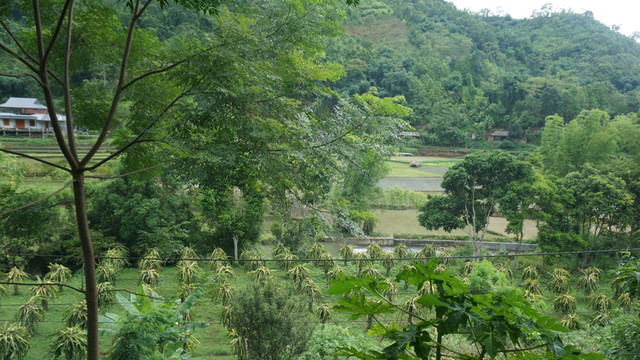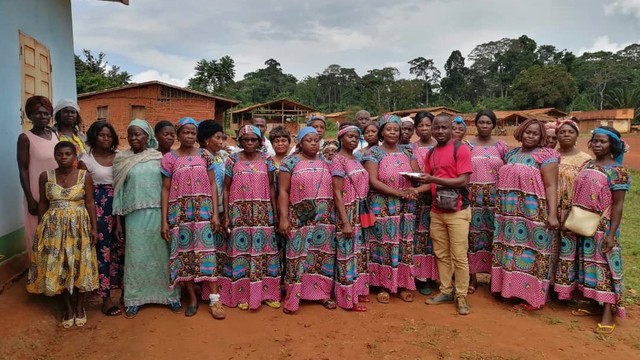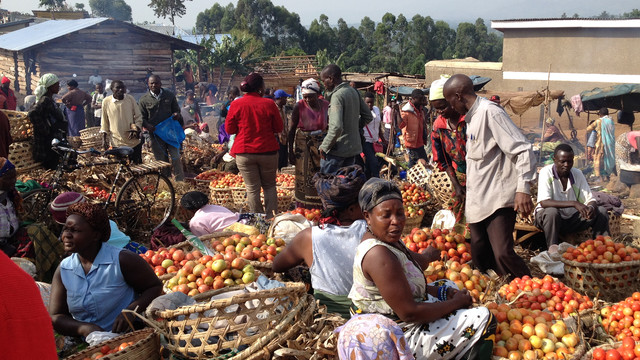Understanding governance and equity in conservation
A successful multi-stakeholder self-assessment in Uganda’s Lake Mburo National Park enabled local people to judge what does and doesn’t work, and draws out their ideas for action.


Women from around Lake Mburo National Park participate in a focus group discussion as part of a multi-stakeholder governance assessment (Photo: Francesca Booker/ IIED)
Huddled into a shack built for livestock in rural Uganda, we were sitting with 25 women. It was cosy: we’d only invited 10. And when more turned up we wondered whether we’d be able to facilitate a meaningful discussion about governance.
Over the last three years, IIED and partners have been leading a global effort to understand and assess governance in protected and conserved areas. This includes work at Uganda’s Lake Mburo National Park.
We needn’t have been apprehensive − this became one of the most active and engaged focus groups we’d met. In fact, our experience from discussions with people around Uganda’s Lake Mburo National Park firmly established for us that governance and equity underpin successful conservation.
We learnt how effective multi-stakeholder assessments are in beginning valuable conversations on what’s working and what isn’t, and identifying actions for improvements. All we need to do now is convince you.
What do we mean by governance?
Governance is about who defines the overall objectives – in this case, of protected and conserved areas – and how. It’s also about the allocation of responsibility and accountability for delivering on these objectives. When assessing governance, typically we’re looking at ‘governance quality’ – or what is commonly referred to as ‘good governance’.
IIED has distilled 11 principles specifically for assessing governance at protected and other conserved areas. The principles build from previous work by the International Union for Conservation of Nature (IUCN) and cover aspects of stakeholders’ legitimacy and voice, their accountability as well as the fairness and rights, performance and direction of conservation actions.
How do you assess governance?
In our new video, we take you through the governance assessment process carried out by local people living around Lake Mburo National Park:
A key point is that IIED’s approach to governance assessment means local people undertake the assessment – their judgement of what’s working and what’s not, and their ideas for action is what’s important. The role of a facilitators is to enable this conversation.
In this recent Q&A, IIED’s Phil Franks provides more detail of the benefits of multi-stakeholder governance assessments.
Why assess governance?
Governance assessments
- Provide a health check, setting out the strengths and challenges of the current situation within a protected or conserved area
- Provide a diagnostic, explaining the underlying causes of existing challenges, and
- Monitor information, establishing a baseline to measure changes over time.
That’s the technical part. Most important is the human angle: you support an assessment because it matters to local people.
Governance assessment can help to ensure that conservation is more equitable – or fairer – to local people. And, let’s not forget, ‘equitable management’ is now a priority in international policy – Aichi Target 11.
“Can you drink water when you are dead?” – focus group member
Referencing back to the focus group, one of the women stood up to share her views on the park.
“Me? I totally see no use of a park… I just see no importance as to why the park exists because wild animals are continuously destroying our banana plantations…”
“Can you go to school and study if you are hungry?...”
“Can you drink water when you are dead?”
These words garnered loud applause from the other women. Many were frustrated – they had never been part of discussions on conservation, despite conservation having a profound impact on their and their families’ lives.
But let us leave the last word to Richard Godfrey Matanda – a community conservation warden for Uganda Wildlife Authority at Lake Mburo National Park. In this short video he explains how governance assessment helps you learn more about stakeholders’ views, ultimately to improve conservation.
IIED is currently drafting a report from our experience with governance assessment in Bangladesh, Kenya, Philippines and Uganda. We will also soon publish a manual on governance assessment. Watch this space.
Further resources
The international research programme Ecosystem Services for Poverty Alleviation (ESPA) funded the work described in this blog. ESPA have produced a great new animation that unpicks equity and conservation: Protected areas for all: ensuring better outcomes for people and the environment.



